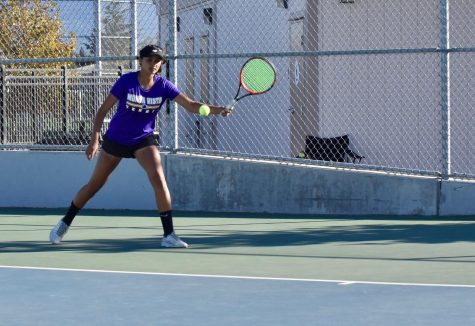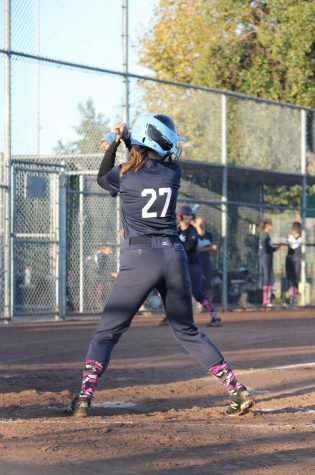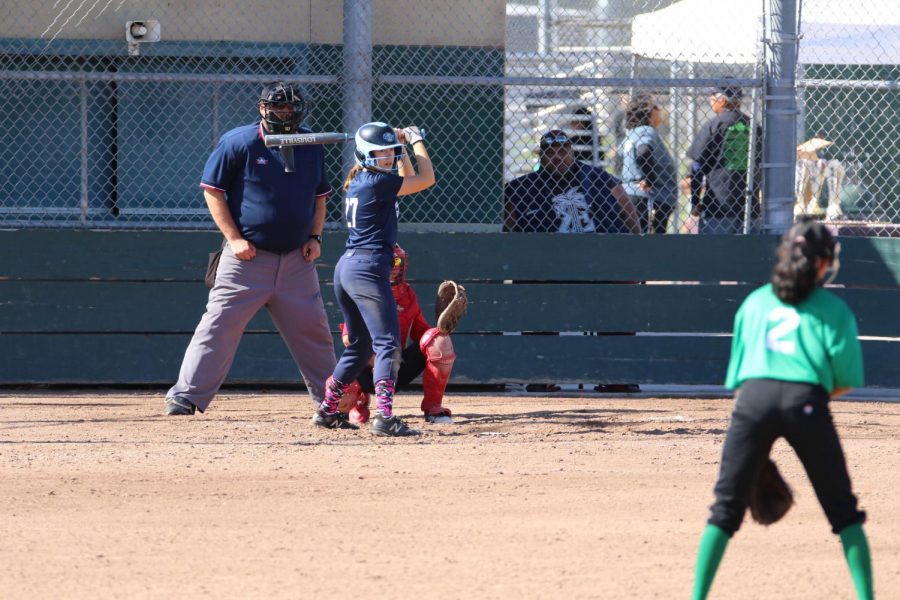Left-Handed Athletes
How being left-handed affects athletes in their athletic career
November 5, 2019
At five years old, sophomore Rhea Rai stood opposite of her dad on the tennis court and picked up her racket. As he showed her how to swing the racket, Rai mimicked her father’s motions with her left hand, trying to develop her own skills at a young age. As a result of this, she has grown accustomed to using her left hand when playing tennis, despite being right-handed in daily activities.
Over the 10 years she has played tennis, Rai has noticed that playing left-handed has been immensely advantageous for her, since left-handers create a spin on the ball that’s harder for opponents to return. This helps her make up for some of her weaker skills, such as serving, where she is able to super slice which is when the tennis ball backspins due to impact.
“When I serve [with my left hand], I just put a lot of spin in [the ball] so [that] it makes the ball [move] super slow,” Rai said. “Usually people’s serves are super fast and mine is horrible, [so] when I serve [with my left hand], I hit super slice and I’m only able to do that because I’m left-handed. When I hit that slice, [my opponents] are confused, so then [they] miss.”

Contrasting Rai’s experience is junior and volleyball player Neil Poulo. After starting to play volleyball in eighth grade at Kennedy MS, Poulo learned to hit and play with his right hand to fit in with his team, despite being left-handed in other daily activities.
“I think it [was] a lot easier learn[ing to] hit with [my] right hand,” Poulo said. “At the time, everybody was right-handed, and learning with my left hand would just be learning the exact opposite of what I had to learn.”
Even though Poulo has become accustomed to playing with his right hand, he wishes he would’ve started off learning with his left since it would be advantageous to his specific gameplay in volleyball, as left handed hitters can deliver unanticipated hits on the left side.
“It’s very rare to see left-hand hitters [in volleyball],” Poulo said. “It’s a big advantage to be a left-hand hitter overall in volleyball because it just throws off the other team.”
Despite Rai and Poulo’s advantages, sophomore Marcella Fowlkes believes that being left-handed has a substantial effect on her as a softball player. Since almost all of Fowlkes’ coaches have been right-handed, it can be a challenge for her to learn particular skills.
“It was definitely a lot of mirroring and teaching myself,” Fowlkes said. “So you have to watch your coach do something, and then switch your position. They’ll put their right foot forward, you’ll have to put your left foot forward. So it’s all mirroring it to yourself, which is a little bit difficult at times.”
In softball, there are certain positions that do not favor left-handers, including second base, third base and shortstop positions, since a left-handed player must take time to catch the ball, then reposition themselves to prepare to throw again. For Fowlkes, she struggles dealing with these issues and as a result, it can often be set apart from other right-handed players and being overlooked by coaches despite having the talent.

Regardless of Fowlkes’s beliefs, De Anza College athletic trainer David Kobata explains that athletes could ultimately develop strong skills through practice with either dominant hand that can be beneficial to their game.
“Individuals who are right-handed or left-handed will make sure they perfect the craft,” Kobata said. “Either way, they’re both advantage[ous] to certain degree[s]. [If] you’re [a] right-hander, you could be good on the right side. [Left-handers] can be good on the left side.”
Being a former basketball coach, Kobata explains that he hasn’t made specific game plays and strategies for his left handers, but sometimes based on the comfort level of his players, he notices preferences for players to drive or take shots on their dominant hand side of the court. Additionally, Kobata notes that although there are fewer left-handed athletes, especially in softball with players like Fowlkes, he stresses that coaches should give all players equal opportunities, regardless of their dominant hand.
“Left-handers are a dime a dozen,” Kobata said. “But they’re really good at every sport they partake in. You have to treat them just as a top-notch athlete as [someone] who’s using their right hand, because [left-handers] are going to perfect their craft and be good at what they want to do. I think it’s just [about] becoming a good athlete.”
At the end of the day, players like Rai, Poulo and Fowlkes have become accustomed to using their dominant hands in their sport, and as Kobata mentioned, have developed ways to strengthen their skills with practice. However, even with this, Fowlkes still strongly believes that playing softball right-handed could have naturally improved her overall softball ability.
“I really wish that my mom or dad forced me to throw right-handed,” Fowlkes said. “That way, I would be able to go for [more positions]. Throw[ing] with my right hand [but still batting left-handed] would have made my life so much easier.”



















